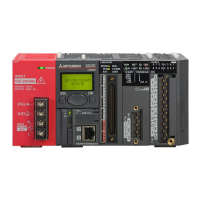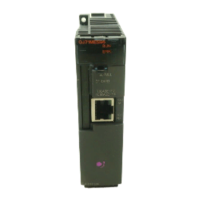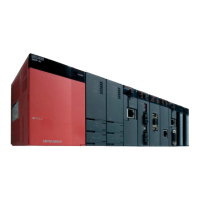447
BINDA, BINDAP, DBINDA, DBINDAP
1
2
3
4
4
6
7
8
7.11 Character string processing instructions
7.11.1 BINDA, BINDAP, DBINDA, DBINDAP
7.11 Character string processing instructions
: BIN data to be converted to ASCII (BIN 16/32 bits)
: Head number of the devices where the conversion result will be stored (character string)
Function
BINDA
(1) Converts the individual digit numbers of decimal notation of the BIN 16-bit data designated by into ASCII codes, and
stores the results into the area starting from the device designated by .
For example, if -12345 has been designated at , the following will be stored from onward:
(2) The BIN data designated at can be in the range from -32768 to 32767.
(3) The operation results stored at are as follows:
(a) The sign "20
H
" will be stored if the BIN data is positive, and the sign "2D
H
" will be stored if it is negative.
(b) The sign "20
H
" will be stored for the leading zeros of effective digits. (Zero suppression is conducted.)
(c) The storage of data at devices specified by +3 differs depending on the ON/OFF status of SM701 (output number
of characters conversion signal).
When SM701 is OFF.....Stores "0"
When SM701 is ON ......Does not change
7.11.1 BINDA, BINDAP Conversion from BIN 16-bit data to decimal ASCII
DBINDA, DBINDAP Conversion from BIN 32-bit data to decimal ASCII
7.11.1
BINDA, BINDAP, DBINDA, DBINDAP
Setting
Data
Internal Devices
R, ZR
J\
U\G
Zn
Constants
K, H
Other
Bit Word Bit Word
––
–– –– ––
Process
High
performance
Redundant
Universal
LCPU
Basic
Command
Command
P
S
D
S D
BINDAP, DBINDAP
BINDA, DBINDA
indicates an instruction symbol of BINDA/DBINDA.
S
D
S
D
S
D
+1
Sign
ASCII code for ten-thousands place
ASCII code for thousands place
ASCII code for hundreds place
b15 b8 b7 b0
+2
b15 b0
BIN 16-bit data
0
ASCII code for tens placeASCII code for units place
+3
S
D
D
D
D
Only when
SM701 is OFF
S
D
+1
2DH ( )31H (1)
32
H (2)33H (3)
b15 b8 b7 b0
+2
b15 b0
34H (4)
35
H (5)
00
H
+3
1234
5
D
S
D
D
D
S
D
0 0 3 2 5
Number of significant digits
20
H is set
D
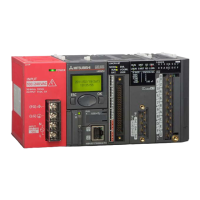
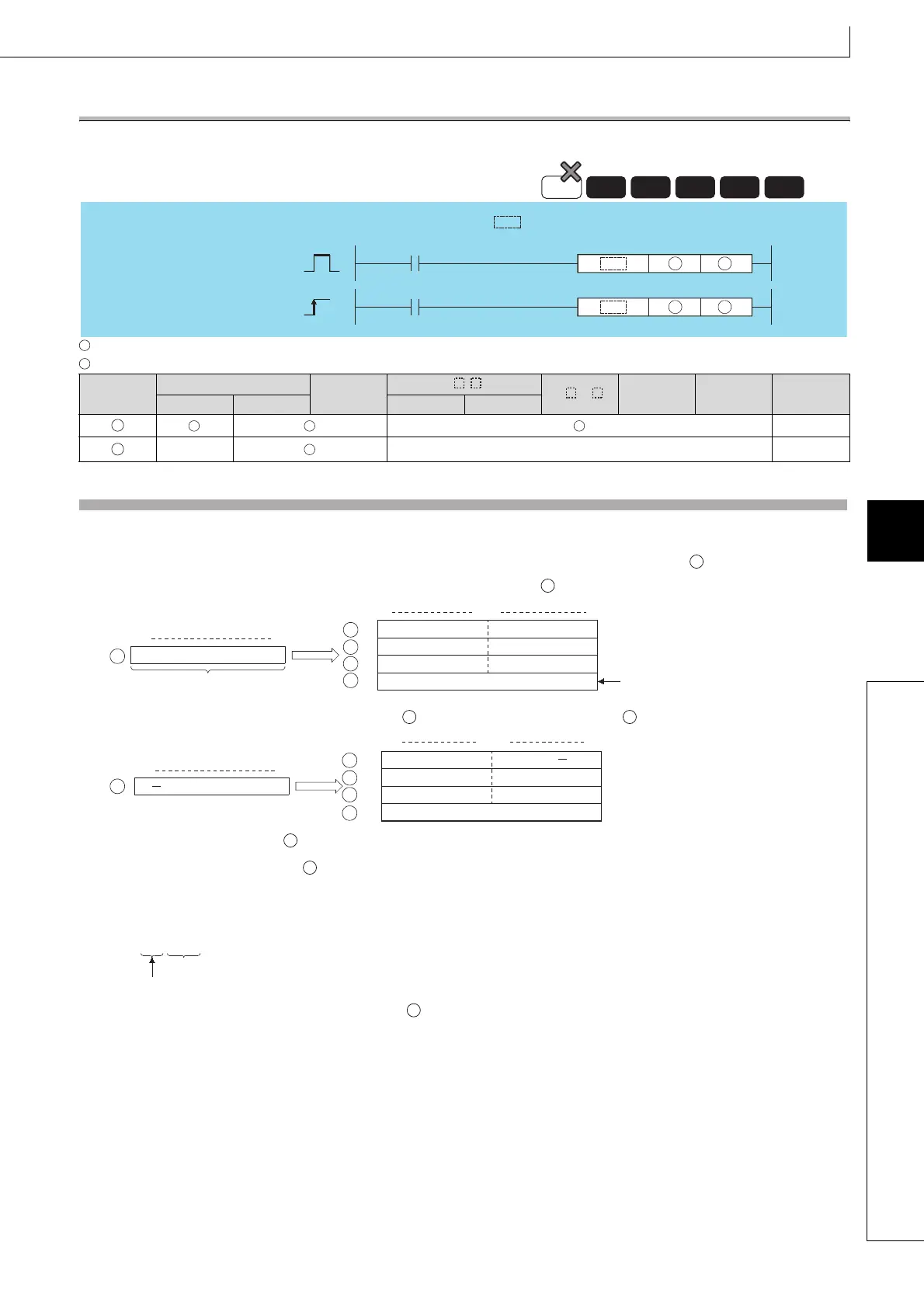